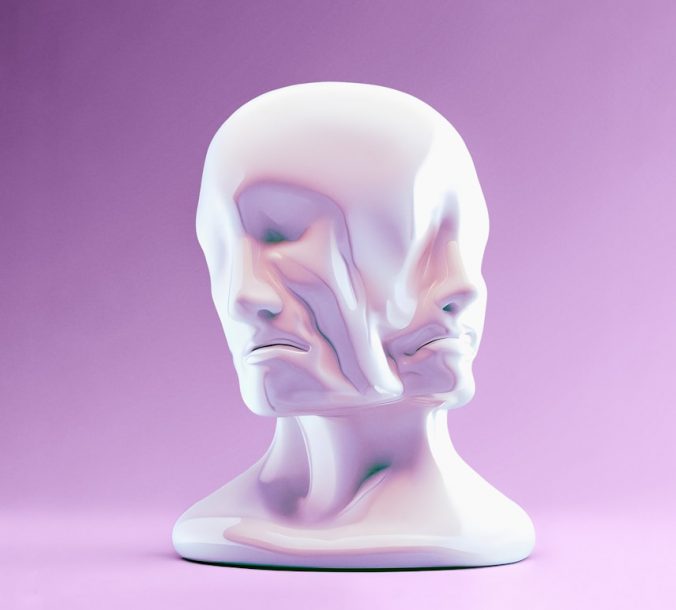I’ve learned a great deal in my graduate program. One of my classes spoke about a social media marketing campaign for breast cancer awareness. Some of you might remember seeing mysterious posts by individuals, such as “Dorothy, Red” or “Samantha, Blue” one October a few years ago. The key to the posts was a meme sent to ladies via Messenger asking them to post their name and the color of their bra. The reason for the posts? October is Breast Cancer Awareness Month.
While the meme is a good example of cyberactivism, was it really affective? The message was only sent to ladies, but they are leaving out the population of men who also deal with breast cancer. The Susan G. Komen website states, “less than 1% of all breast cancer cases occur in men.” The fact that the statistic is so small is good. However, what about those men who are in the “less than 1%” group? Being a small percentage doesn’t negate the need for the message.
It got me to thinking about a cause I am passionate about: mental health. For thousands of years the majority of the world suffered from what I think of as Stigmastasis – stuck in a state of stigma – when it came to mental health. Recently, though, we have seen an increase in candid conversations about mental health topics. Depression, anxiety, addiction, and bi-polar disorder are among the most common conditions in active discussion. I address my own personal experiences with mental health in my two-part post Metaphors and Me.
Those who suffer from stigmastasis don’t have all the facts about the topic in question. They don’t even know they have their own form of mental health condition. Sometimes their case is so extreme, they refuse to acknowledge the facts surrounding another mental health condition.
For example, stigmastasians (don’t laugh, you’ll hurt their feelings) do know know that OCD is not just a fear of germs. According to the National Institute of Mental Health, OCD also involves “unwanted forbidden or taboo thoughts involving sex, religion, or harm [and/or] aggressive thoughts towards others or self.” These thoughts are called intrusive thoughts. I know because I deal with them on a daily basis. For many years, I literally thought I was crazy – in a bad way. I was suffering from both intrusive thoughts and stigmastasis. I had to keep it quiet because what would happen if people knew? I would never act on those thoughts. I felt ashamed to be having them in the first place. A mental health practitioner I saw in my early 30’s finally identified and explained what they were. The horrible thoughts randomly floating into my brain was not a symptom of psychosis, it was a part of my OCD.
Psychosis is a disorder that is still truly taboo. Who wants to admit that they have psychotic episodes where they have literally taken a break from reality? I don’t say that lightly. I have a loved one who experienced psychotic episodes. Actions stemming from stigmastasis, shaming and shunning, are often paired with being honest with others about this serious disorder.
I have educated a number of people about intrusive thoughts and have even found others who also experience them. Because I was willing to talk about it, my daughter was able to identify what they were and tell me she was having them, too. She has the advantage of learning how to deal with them now instead of suffering from intrusive thoughts and stigmastasis for decades with the overwhelming anxiety and shame involved with not knowing.
Even mental health disorders that have more conversation and awareness than others suffer from an onslaught of stigmastasis. Addiction recovery receives a great deal of attention. Anonymous meetings for the many forms of addiction exist for the betterment of its members. And yet, organizations like Shatterproof are still working an uphill battle representing and acting to forward the cause of addiction treatment and recovery.
Let’s take a break and go back to the original topic for a moment. The problem with the breast cancer awareness meme is not as much the message as the lack of call to action. Awareness is wonderful. A call to action is the key to any activism campaign – cyber or otherwise.
So here is my call to action. Stamp Out Stigma, an initiative spearheaded by the Association for Behavioral Health and Wellness (ABHW) promotes their philosophy of the three “R’s” (recognize, reeducate, and reduce the stigma). It is an excellent direction to start moving. Below is a list of mental health disorders with links to learn more about each condition. Consider a way you can help further the cause of mental health awareness. A link for sharable resources from the National Institute of Mental Health is also posted (if available). Feel free to add disorders and links to mental health information in the comments below. What can you do to reduce the prevalence of stigmastasis against mental health?
Addiction Recovery – Sharable resources
ADHD/ADD – Sharable resources
Agoraphobia
Anxiety – Sharable Resources
Autism Spectrum Disorder – Sharable resources
Depression – Sharable Resources
Eating Disorders – Sharable resources
Bi-polar Disorder – Sharable Resources
Borderline Personality Disorder – Sharable resources
Children with Mental Illness – Sharable resources
Obsessive Compulsive Disorder (OCD)
Post-Traumatic Stress Disorder (PTSD) – Sharable resources
Psychosis/Psychotic
Schizophrenia – Sharable resources
Social Anxiety Disorder (formerly Social Phobia)
Suicide – Sharable resources
Trichotillomania


